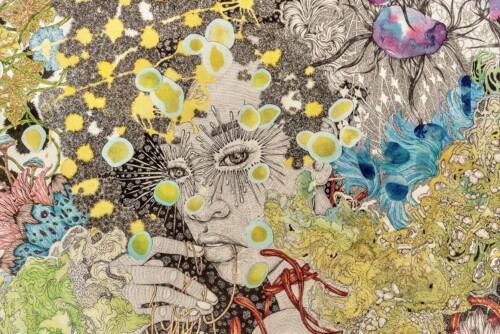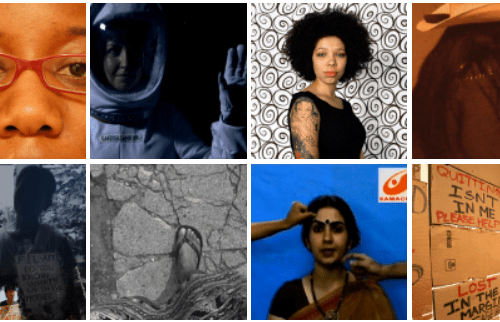Who Counts? Queer Poverty
But Jay emphasizes that handling the phone calls is not nearly as frustrating as coping with what she perceives as deliberate blindness to poverty within the mainstream queer community. “Why is this great queer community that is supposed to be representing all of us and taking care of all of us not focusing on homelessness? Why are they only focused on gay marriage? I don’t remember getting a memo to check off what I wanted on the agenda, and there are thousands out there on the streets and in the shelters that I’m pretty sure didn’t get that memo either.” She believes the denial of poverty and homelessness in the queer community is similar to a historical denial about substance use and mental health needs: “It took a long time for the community to respond to addiction and mental illness, and today it is taking too long for the community to wake up to the reality of poverty.” The dearth of data is a key factor and one that Jay understands as an obstacle to her work. There is no research that would allow for quantifying the problem of queer poverty and insofar as data helps determine the allocation of public and private resources, no numbers is equated with no need, no problem, no resources, no community, no organizing, no solution, and no change. Despite the 2007/2008 recession that legitimized and mainstreamed concern about poverty, as a media frenzy zoomed in on stories about the new poor—the middle-income families falling short on mortgage payments and struggling to pay for basic necessities like housing and food—stories from the queer community remained untold. A fever-pitched numbers game ensued in other communities. Every media outlet wanted to tell the new story of need; inquiries about new data flooded in to nonprofit organizations working on poverty related issues; and nonprofits, in turn scrambled to produce fresh statistics. All that mattered was capturing and detailing demographics of increasing need as every organization sought to draw in extra resources for the populations they serve. Of course, missing from these stories was the queer perspective. Without baseline data and a systematic method for tracking trends our community is ill-equipped to discuss the impact of the financial crisis and queer poverty remains an invisible issue.
Our understandable preoccupation with maintaining anonymity and privacy as measures to protect us from discrimination ironically serves to closet and disappear the most vulnerable among us. Lack of recognition means that poor queers are reliant on existing institutions for services—institutions that are frequently hostile environments for people in our community, from the basic denial of individual identity when people are not allowed to use their preferred names on government-issued identification to harassment and abuse of queer individuals within the shelter system. In short, queer poverty disappears through the crack between the queer and antipoverty communities. While the queer community was not addressing poverty issues, the antipoverty community was not addressing queer issues.
This dangerous invisibility resonates with Jay. During her own time in the homeless shelter system she was subject to daily discrimination. Jay felt disempowered and disrespected by the staff’s insistence on using her official name, “Judith,” being told that it was not appropriate for her to mention her partner or the fact that she is a lesbian in therapy groups, and how to dress and behave gender-appropriately for housing appointments. On the darker end are the bathroom attacks, the beatings and name-calling: elements that make it that much harder for queers to put the pieces of their lives back together again. “If you have to constantly watch your back as a queer person in the shelter system, how can you move on? How can you think about getting a job or housing if you’re constantly looking out for people [fellow shelter residents or staff] who want to attack you?” Sadly, Jay was not surprised by this lack of recognition; it was in keeping with the invisibility and denial she had already endured in her own family and community. Jay’s story of homelessness began where so many such journeys do: Her childhood home was an unsafe environment and in a bid to escape she fell into unsurprising pain-suppressing activities. Years of alcohol and substance use led to inevitable homelessness and being queer contributed to her long stay on the streets, as she feared for her safety in the homeless shelter system. But, she recounts feeling disowned by the queer community when she was asked to move along from sleeping “safely” outside recognized gay establishments in the West Village.
Beyond Equality, Our Present Poverty
Many of the broad lived experiences of queer individuals including poverty, homelessness, addiction, mental health, hunger, and aging are missing from the annals of queer history, popular culture, and current debate; and continue to be omitted from the queer agenda. But mainstream research indicates we should be paying more attention.
Despite the reality that issues like homelessness, hunger, lack of access to education, and unemployment have many complicated roots, the primary cause is economic: specifically it is the lack of economic justice that holds an increasing majority of people in the jaws of poverty. Census data showing that more than 37 million US residents (one in eight) live at or below the federal poverty line (slightly more than $18,000 per year for a family of three),1 only begin to touch on the level of need that saturates communities around the country. There is broad agreement that the current federal poverty measure, which fails to account for realistic living costs such as housing, is antiquated2 and fails to account for factors such as geographical differences in the cost of living (including high housing costs) and debt.3 Indeed, the practice of setting eligibility criteria for federal assistance programs at varying percentages of poverty at least demonstrates government recognition that the poverty measure is problematic, and research conducted by Columbia University has shown that families throughout the United States need an income of about twice (200 percent) the federal poverty level to meet basic needs.4 Insufficient earnings and fixed incomes (such as Social Security) are primary factors. For example, even in New York City where the minimum wage ($7.25 as of July 20095) is set at a higher level than the federal minimum wage, the annual gross earnings for a minimum wage full-time worker in New York City (working 40 hours per week for 52 weeks) is only $15,080, well below the federal poverty level for a family of three. As the National Coalition for the Homeless describes, “Declining wages, in turn, have put housing out of reach for many workers: in every state, more than the minimum wage is required to afford a one- or two-bedroom apartment at Fair Market Rent.”6 For the majority of families and individuals, housing factors as the single greatest basic living cost. Nationwide almost half (46 percent) of all renters pay more than 30 percent of their income on rent.7
Jay is aware of the implications for queers as she notes the high number of youth who are set adrift without the benefit of even the most basic education standards and subsequently become trapped in minimum-wage employment without the hope of career advancement. She also highlights the employment obstacles that face those of us who do not “pass,” explaining that people of trans experience and gender-nonconforming community members face discrimination in the workplace and are often forced to rely on minimum wage jobs or unofficial employment. Jay’s insight sheds light on how the range of issue-based causes for homelessness and poverty are in part driven by economic factors and disproportionately affect the queer community.
- United States Census Bureau, American Community Survey (Washington: United States Census Bureau, 2007). [↩]
- In 1960 the measure was developed based upon research showing that households spent an average of one third of their incomes on food whereas current research shows that households generally spend one seventh of their income on food. [↩]
- See Commission for Economic Opportunity, Increasing Opportunity and Reducing Poverty in New York City (New York: Commission for Economic Opportunity, 2006); Center for Economic Opportunity, An Alternative to the Federal Poverty Measure (New York: Center for Economic Opportunity, 2008); and National Center for Children in Poverty, Columbia University, What is the Nature of Poverty and Economic Hardship in the United States? (New York: National Center for Children in Poverty, Columbia University, 2008). [↩]
- National Center for Children in Poverty, Columbia University, Measuring Income and Poverty in the United States (New York: National Center for Children in Poverty, Columbia University, 2007). Living expenses taken into account include rent and utilities, food, child care, health insurance, transportation, other necessities, and payroll and income taxes. [↩]
- United States Department of Labor. [↩]
- National Coalition for the Homeless, Why Are People Homeless? (Washington: National Coalition for the Homeless, 2009). [↩]
- United States Census Bureau, American Community Survey 2005-2007 Estimates (Washington: United States Census Bureau, 2007). [↩]




